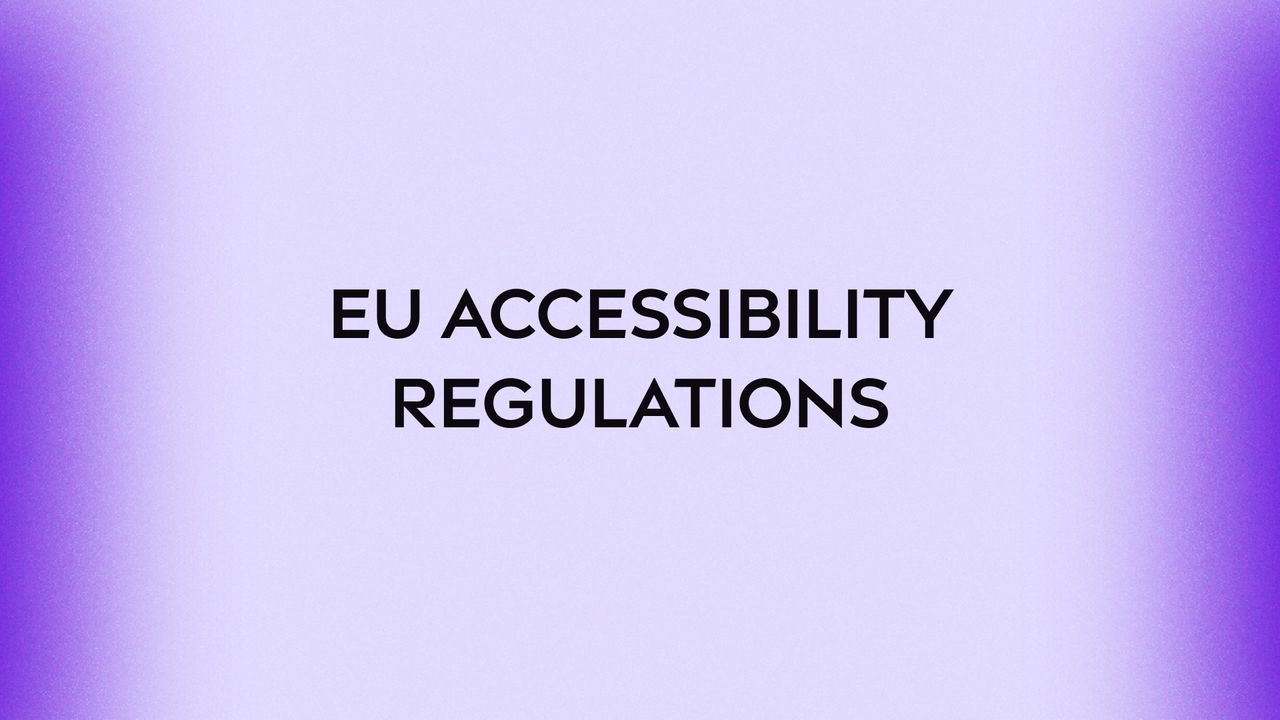
New EU accessibility regulations and what it means for your business
There are new EU regulations for digital accessibility on the horizon with a target date of 2025, the online discourse around this legislation has been muddy at best so we're going to simplify it and add our own stance into the mix.
Before we get started here is the official link to a pretty concise article on the full matter and all the considerations that were taken into account while this legislation was being written.
accessibility is a fundamental pillar of design and UX
What is accessibility?
Accessibility (aka a11y) refers to a wide standard or set of best practices in order to make your app or website usable by people with cognitive, visual, auditive or motor impairments. Some people may also be using alternative navigation means such as screen readers, keyboards or more custom devices that help them use their computer and browse the web.

The picture is taken from the Xbox adaptive controller page.
Who is affected?
In short, it affects everyone.
A common misconception is that only people with disabilities are affected, however the reality is more complicated than that with the majority of the population being affected at one point or another. For example colour blindness affects roughly 1 in 12 men (source) and the severity and type of colour blindness can also widely vary, that's just one possible impairment.
So one cause of disability is simply due your genetics and how you are born and plenty of people struggle to sympathise with this especially when it's not something as visible as blindness or being wheelchair bound however we want to add more to this discussion; the next cause is ageing.
We all age, sorry to give you the reality check right now and as we get older we will increasingly become more limited in how well we can see, we may lose fine motor control, our hearing will get worse and it's also likely that cognitively you may begin to slow down.
Lastly, you may have an accident and be left with life changing disabilities, again possibly affecting one or more aspects of your ability to access the digital world which has been and will continue to be critical to your life.
What does this law mean for me?
Although some news outlets may present this law as confusing and scary, just as they did with GDPR, in reality the law is more about setting a base standard going forward and giving affected users a venue to make sure that they can access digital services.
Brief summary
- businesses with less than 10 employees are not affected
- the details of how this is implemented will be up to each individual country
- you have until 28 June 2025 to be compliant
- this law affects physical devices as well as software
- it includes private businesses, not just public and government services
Actions
We have some recommendations to make regardless if your business is exempted from the above:
- get an accessibility audit done by a professional (contact us)
- update your website or application to meet compliance
- create an accessibility statement that will accompany your privacy policy
We hope these steps condense down the necessary tasks, however your developers should be able to assist in providing bespoke guidance, we're also open for consultation.
Examples for each type of accessibility criteria
If you're looking to learn a bit more about accessibility then stick around as we'll expand a little bit on the subject matter and further down we make our stance on the matter.
Structural
The most common point of failure in accessibility audits is simply the underlying code and structure of your website. Modern websites are built with semantic HTML and well structured articles that can let bots and other devices like screen readers be able to follow a hierarchy of the page without needing to understand the content or be able to see it.
- make use of a hierarchy H1s to H6s as it makes sense, each subheading matters as they act as major landmarks for users to jump around the page
- label all form elements
- use nav elements for navigation
- article and aside elements help to differentiate page-relevant content to suggestions
- use buttons and anchors appropriately
Visual
The most obvious accessibility criteria is the visual side, this is where non developers can immediately start to spot things wrong and it's something that affects a lot more users which gives it more priority.
- colour contrasts need to meet certain regulations
- font sizes need to be readable
- flashing colours can affect users with epilepsy
- animations can sometimes cause motion sickness
- dark mode can be harder to read for some people
Auditory
If your content makes use of a lot of sound content such as videos, sound effects or podcasts then you might need to provide transcripts or subtitles for users to be able to interact with your website, as a bonus this will help your SEO as Google can more easily index the full content you provide.
- no sudden or unexpected loud noises
- provide transcripts and subtitles
- provide player controls including volume changer and mute buttons
Motor function
Not everyone can use a mouse, or can use one rapidly and accurately, this is a big reason we're seeing accessibility features make their way into games as well to reduce the barrier to entry and allow more people to enjoy these experiences.
- make all links and buttons big enough to be clickable
- don't make confusing modals or interactions that can't be closed easily
- make sure the entire website or app is usable via a keyboard
Cognitive
This is often overlooked, however there are different levels of understanding of language, reading skills or pattern recognition.
To simplify this step, ask yourself just one question, can my target audience easily understand the message I'm trying to send?
A content audit with some UX best practices sprinkled in is often more than enough to figure this out and it's all dependant on context. Chances are improving the UX via cognitive load will also help your baseline in business by making your message, your services and your products a lot more clear and easier to sell.
...
There are a lot of best practices to follow here, too many to list in this article and your technical team is best placed to handle it for your specific situation.
*Sigh*, more regulations in Europe...
We've seen this response a few times along with "this and GDPR has been the greatest failures of the EU" and it's quite telling that people spouting these views either don't fully understand the legislation or they don't care about your privacy or in this case UX.
We wanted to address this one because frankly it's pathetic and we thought by now it would be obvious to some, but it clearly isn't so here's a mini rant.
Accessibility is one of the pillars defining the quality and standards that you work to, would you make a website not responsive dependant on budget or skills? Of course not in this day and age, so why would you accept to be less accessible and by definition have worse UX?
The only answer is because you either don't understand in which case you should take the time to learn or you don't care in which case you probably don't care about other aspects of your work either.
Everybody on a team is responsible for accessibility, doesn't matter if you're stakeholder, manager, designer or developer.
Accessibility is a fundamental pillar of design and UX so it's a team effort to make sure these standards are respected and abided by.
To conclude...
This EU regulation is one of the good ones and we hope to see the floor raised in the quality of UX across the board in Europe, and we'll see other big markets adopt similar legislations over the next decade.
While it can be scary to have yet another thing users can take you to court over, in reality the legislation is less about that and more about respecting the spirit of accessibility. SMEs, local shops and anybody who cares about their users should genuinely have nothing to worry about.
If you need an accessibility audit or a consultation for your business, don't hesitate to contact us and we'll take care of you!